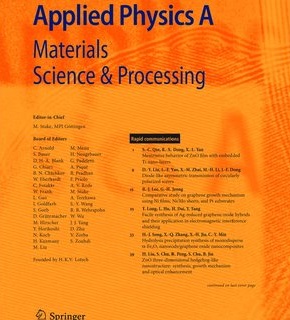Heparinization of triple-layer electrospun PLA-COL@PLA-PCL@PCL-GEL small-caliber vascular scaffold with higher anticoagulant performance
Abstract
Triple-layer small-caliber vascular scaffolds were prepared using multi-step electrospinning technology, with polylactic acid (PLA) and collagen (COL) used for the inner layer, PLA and polycaprolactone (PCL) for the middle layer and polycaprolactone (PCL) and gelatine (GEL) for the outermost layer. The triple-layer vascular scaffolds were then deposited by chitosan and followed by chemical crosslinking of heparin to improve the anti-coagulant properties of vascular scaffolds. The deposited chitosan provided more amino active sites for the cross-linking of heparin. The heparinization of vascular scaffolds provided excellent hydrophilic properties, and promoted cell adhesion and proliferation on inner layer of vascular scaffolds. On day 5 of cell proliferation, the vascular scaffolds (PC21-CHep) with PLA: COL = 2:1, loaded-chitosan and grafted-heparin was almost completely covered with endothelial cells, which made the endothelialization possible. The maximum tensile stress in the axial direction of the PC21-CHep scaffold reached 8.47 MPa, which far exceeded the tensile strength of natural vessels. In terms of anticoagulation, the vascular scaffolds with more grafted-heparin showed a much higher anticoagulant performance than vascular scaffolds without functionalized modification of heparin. The prepared vascular scaffold is a promising potential alternative in vascular tissue engineering with excellent anticoagulant effect.

 求助内容:
求助内容: 应助结果提醒方式:
应助结果提醒方式:


